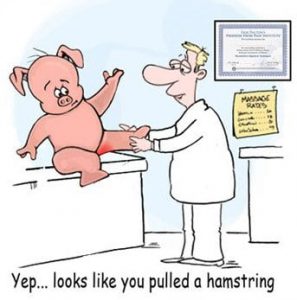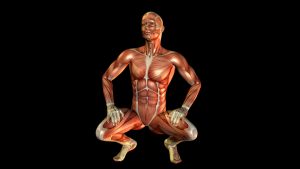
While the word spur often leads people to imagine something sharp or pointed digging into a nerve or other tissue, bone spurs are actually smooth and sometimes crusty growths that can often be mobilized through movement. Although bony spurs are common and do not exhibit symptoms in most cases, when they grow in confined areas adjacent to nerve roots or the spinal cord, nerve compression can occur. Because the uncinate processes are located near the foramina – channels where nerve roots exit the spinal canal – bone spurs that may develop at the uncovertebral joints resulting in a condition known as foraminal stenosis (Fig.1). Should this narrowing of the foraminal canal lead to nerve compression, the brain may deliver symptoms such as localized or radiating pain, tingling, numbness or protective guarding.
So, what can manual and movement therapists do to treat neck cricks caused by facet jamming and nerve root impingement? In many cases, protective muscle spasm can be reduced through application of specific soft-tissue decompression and mobilization maneuvers that help restore “joint play” and facilitate hydration of flattened intervertebral discs. In the video clip seen here, I demonstrate three basic, but effective, myoskeletal techniques to relieve “immobilization arthritis” due to facet jamming and bone spur formation.
Treating Neck Cricks
GOAL: Mobilize cervical muscles that are restraining joint motion
LANDMARK: Typical vertebrae (C2-3 to C7-T1)
A. Chin Jutting (client supine)
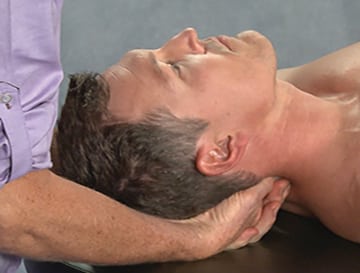
- Therapist’s hands come together so his thumbs can create a fulcrum to brace on both sides of the client’s spinous processes in the lamina groove.
- Therapist brings thumbs ½ inch apart and places them into the lamina groove anywhere in the mid-cervical spine.
- Therapist gently mobilizes client’s neck by pushing up with both thumbs into the groove. This rhythmic action juts the client’s chin as each vertebral segment is extended over the thumb fulcrum.
Repeat the chin-jutting maneuver for 2 minutes and reassess for increased mobility.
B. Cervical Sidebending to Relieve Nerve Root Compression
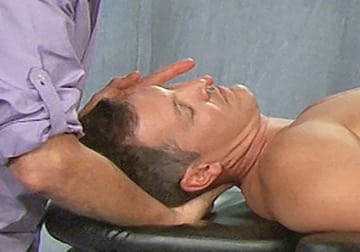
- Therapist’s cupped palms support client’s head as both thumbs pin the lateral body of the C5 spinous process.
- Therapist’s hands right sidebend client’s neck while the right thumb presses against the side of the spinous process (This creates a fulcrum at C5 that tests the mobility of the joint capsules).
- As the therapist steps to his right side, he creates a fulcrum with his right thumb.
- Therapist repeats by sidebending left and pushing with the left thumb.
- If a right sidebending restriction is found as the therapist examines up and down the cervical spine, client inhales and gently left sidebends head against therapist’s resistance to a count of five and relaxes.
- Therapist right sidebends client’s neck to the new restrictive barrier.
Repeat this maneuver until a release is felt in the fibrotic capsules and lamina groove muscles.
C.Translation/ Undulation for Nerve Root Mobilization
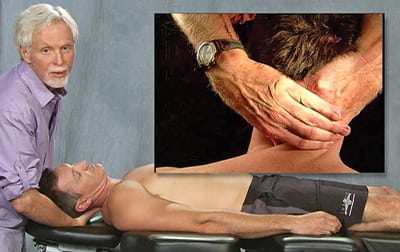
- Therapist’s thumbs face inferiorly and brace each side of the client’s spinous processes.
- As therapist steps to his left foot, his right thumb pushes against the spinous processes.
- As he steps to his right foot, his left thumb presses against the spinous processes.
- Therapist begins a rhythmic undulating motion as he rocks back and forth foot-to-foot, pushing on bodies of spinous processes.
- Therapist examines for motion-restricted tissues from C2-3 to C7-T1 and reassesses for improved mobility.
On sale this week only!
Save 25% off the "Dalton Technique Treasures" eCourse
The “Dalton Technique Treasures” eLearning course is a compilation of some of Erik’s favorite Myoskeletal Alignment Techniques (MAT). Learn MAT techniques to assess and address specific sports injuries, structural misalignment, nervous system overload, and overuse conditions. ON SALE UNTIL July 29th! Get Lifetime Access: As in all our eLearning courses, you get easy access to the course online and there is no expiry date.

